Instruction
Should you pause at the top of your backswing?
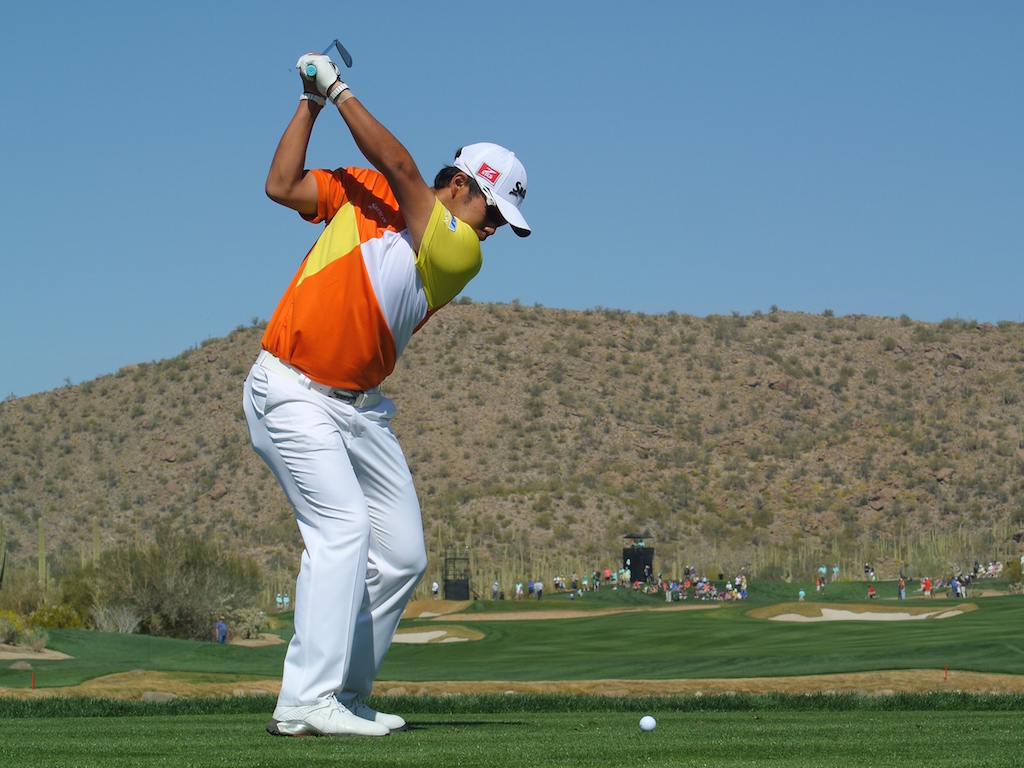
I’ve been so busy teaching this winter that I haven’t had much time to send a few swing tips your way. As you know, most of my articles stem from the patterns I see over and over on the lesson tee. The day-to-day actions of the people I teach alert me to the fact that certain swing flaws are worthy of mentioning in a public forum.
I recently heard Golf Channel analyst Brandel Chamblee talking about all the great players who have paused at the top of their swing. He named Bob Murphy, Jay Haas, Byron Nelson and a few others. Of course now we have Jordan Spieth and Hideki Matsuyama, who do this same thing. As a teacher of wide variety of skill sets, I think there could be a problem with this advice. For every player who has paused at the top of their swing, there are many more who do not.
Notice the (very) slight pause at the top of Tiger Woods’ backswing.
Often, when I see someone attempting to do the pause move (in an effort generally to complete their backswing), they invariably move the upper body first and ruin the proper sequence. Matsuyama and others have a slight hesitation, but they drive their lower body first and are able to separate the torso from the pelvis to create power in the proper sequence.
There is no pause at the top of Sergio Garcia’s backswing.
Great players have great sequencing. It’s part of what makes them great. They initiate the downswing from the ground up. This holds true for those who pause slightly, as well as those who do not. But for most golfers, a sequence of starting the lower body toward the target as the arms and club are still going back is a better option simply because they are less inclined to cast or come over it.
For those inclined to be too quick from the top, a practice drill featuring a slight pause might be well worth the effort, but it is generally not a good idea to try to incorporate it into the real swing. It very often has the reverse effect on what is being attempted, because trying to get the torso to stay behind the ball is more difficult while attempting to pause. The urge to move ahead of the ball is stronger when one tries to stop near the top. The golf swing is one continuous dynamic motion, and the more awareness we can create of the correct sequencing, the better off we are.
A good place to start might be on small pitch shots and little half wedges. For myself, I know I can feel this better in slow, small swings at first. Then I’ll work my way down the bag. This drill can be a bit disconcerting at first and it might take a little getting used to, but I have seen it help a lot of my students feel a better sequence.
If you’d like me to analyze your swing, go to my Facebook page or contact me ([email protected]) about my online swing analysis program.
- LIKE151
- LEGIT45
- WOW11
- LOL9
- IDHT8
- FLOP14
- OB7
- SHANK42
Instruction
The Wedge Guy: The easiest-to-learn golf basic

My golf learning began with this simple fact – if you don’t have a fundamentally sound hold on the golf club, it is practically impossible for your body to execute a fundamentally sound golf swing. I’m still a big believer that the golf swing is much easier to execute if you begin with the proper hold on the club.
As you might imagine, I come into contact with hundreds of golfers of all skill levels. And it is very rare to see a good player with a bad hold on the golf club. There are some exceptions, for sure, but they are very few and very far between, and they typically have beat so many balls with their poor grip that they’ve found a way to work around it.
The reality of biophysics is that the body moves only in certain ways – and the particulars of the way you hold the golf club can totally prevent a sound swing motion that allows the club to release properly through the impact zone. The wonderful thing is that anyone can learn how to put a fundamentally sound hold on the golf club, and you can practice it anywhere your hands are not otherwise engaged, like watching TV or just sitting and relaxing.
Whether you prefer an overlap, interlock or full-finger (not baseball!) grip on the club, the same fundamentals apply. Here are the major grip faults I see most often, in the order of the frequency:
Mis-aligned hands
By this I mean that the palms of the two hands are not parallel to each other. Too many golfers have a weak left hand and strong right, or vice versa. The easiest way to learn how to hold the club with your palms aligned properly is to grip a plain wooden ruler or yardstick. It forces the hands to align properly and shows you how that feels. If you grip and re-grip a yardstick several times, then grip a club, you’ll see that the learning curve is almost immediate.
The position of the grip in the upper/left hand
I also observe many golfers who have the butt of the grip too far into the heel pad of the upper hand (the left hand for right-handed players). It’s amazing how much easier it is to release the club through the ball if even 1/4-1/2″ of the butt is beyond the left heel pad. Try this yourself to see what I mean. Swing the club freely with just your left hand and notice the difference in its release from when you hold it at the end of the grip, versus gripping down even a half inch.
To help you really understand how this works, go to the range and hit shots with your five-iron gripped down a full inch to make the club the same length as your seven-iron. You will probably see an amazing shot shape difference, and likely not see as much distance loss as you would expect.
Too much lower (right) hand on the club
It seems like almost all golfers of 8-10 handicap or higher have the club too far into the palm of the lower hand, because that feels “good” if you are trying to control the path of the clubhead to the ball. But the golf swing is not an effort to hit at the ball – it is a swing of the club. The proper hold on the club has the grip underneath the pad at the base of the fingers. This will likely feel “weak” to you — like you cannot control the club like that. EXACTLY. You should not be trying to control the club with your lower/master hand.
Gripping too tightly
Nearly all golfers hold the club too tightly, which tenses up the forearms and prevents a proper release of the club through impact. In order for the club to move back and through properly, you must feel that the club is controlled by the last three fingers of the upper hand, and the middle two fingers of the lower hand. If you engage your thumbs and forefingers in “holding” the club, the result will almost always be a grip that is too tight. Try this for yourself. Hold the club in your upper hand only, and squeeze firmly with just the last three fingers, with the forefinger and thumb off the club entirely. You have good control, but your forearms are not tense. Then begin to squeeze down with your thumb and forefinger and observe the tensing of the entire forearm. This is the way we are made, so the key to preventing tenseness in the arms is to hold the club very lightly with the “pinchers” — the thumbs and forefingers.
So, those are what I believe are the four fundamentals of a good grip. Anyone can learn them in their home or office very quickly. There is no easier way to improve your ball striking consistency and add distance than giving more attention to the way you hold the golf club.
More from the Wedge Guy
- The Wedge Guy: Golf mastery begins with your wedge game
- The Wedge Guy: Why golf is 20 times harder than brain surgery
- The Wedge Guy: Musings on the golf ball rollback
- LIKE86
- LEGIT13
- WOW6
- LOL1
- IDHT0
- FLOP4
- OB1
- SHANK8
Instruction
Clement: Stop ripping off your swing with this drill!

Not the dreaded headcover under the armpit drill! As if your body is defective and can’t function by itself! Have you seen how incredible the human machine is with all the incredible feats of agility all kinds of athletes are accomplishing? You think your body is so defective (the good Lord is laughing his head off at you) that it needs a headcover tucked under the armpit so you can swing like T-Rex?
- LIKE0
- LEGIT2
- WOW2
- LOL0
- IDHT0
- FLOP0
- OB0
- SHANK2
Instruction
How a towel can fix your golf swing

This is a classic drill that has been used for decades. However, the world of marketed training aids has grown so much during that time that this simple practice has been virtually forgotten. Because why teach people how to play golf using everyday items when you can create and sell a product that reinforces the same thing? Nevertheless, I am here to give you helpful advice without running to the nearest Edwin Watts or adding something to your Amazon cart.
For the “scoring clubs,” having a solid connection between the arms and body during the swing, especially through impact, is paramount to creating long-lasting consistency. And keeping that connection throughout the swing helps rotate the shoulders more to generate more power to help you hit it farther. So, how does this drill work, and what will your game benefit from it? Well, let’s get into it.
Setup
You can use this for basic chip shots up to complete swings. I use this with every club in my bag, up to a 9 or 8-iron. It’s natural to create incrementally more separation between the arms and body as you progress up the set. So doing this with a high iron or a wood is not recommended.
While you set up to hit a ball, simply tuck the towel underneath both armpits. The length of the towel will determine how tight it will be across your chest but don’t make it so loose that it gets in the way of your vision. After both sides are tucked, make some focused swings, keeping both arms firmly connected to the body during the backswing and follow through. (Note: It’s normal to lose connection on your lead arm during your finishing pose.) When you’re ready, put a ball in the way of those swings and get to work.

Get a Better Shoulder Turn
Many of us struggle to have proper shoulder rotation in our golf swing, especially during long layoffs. Making a swing that is all arms and no shoulders is a surefire way to have less control with wedges and less distance with full swings. Notice how I can get in a similar-looking position in both 60° wedge photos. However, one is weak and uncontrollable, while the other is strong and connected. One allows me to use my larger muscles to create my swing, and one doesn’t. The follow-through is another critical point where having a good connection, as well as solid shoulder rotation, is a must. This drill is great for those who tend to have a “chicken wing” form in their lead arm, which happens when it becomes separated from the body through impact.
In full swings, getting your shoulders to rotate in your golf swing is a great way to reinforce proper weight distribution. If your swing is all arms, it’s much harder to get your weight to naturally shift to the inside part of your trail foot in the backswing. Sure, you could make the mistake of “sliding” to get weight on your back foot, but that doesn’t fix the issue. You must turn into your trial leg to generate power. Additionally, look at the difference in separation between my hands and my head in the 8-iron examples. The green picture has more separation and has my hands lower. This will help me lessen my angle of attack and make it easier to hit the inside part of the golf ball, rather than the over-the-top move that the other picture produces.


Stay Better Connected in the Backswing
When you don’t keep everything in your upper body working as one, getting to a good spot at the top of your swing is very hard to do. It would take impeccable timing along with great hand-eye coordination to hit quality shots with any sort of regularity if the arms are working separately from the body.
Notice in the red pictures of both my 60-degree wedge and 8-iron how high my hands are and the fact you can clearly see my shoulder through the gap in my arms. That has happened because the right arm, just above my elbow, has become totally disconnected from my body. That separation causes me to lift my hands as well as lose some of the extension in my left arm. This has been corrected in the green pictures by using this drill to reinforce that connection. It will also make you focus on keeping the lead arm close to your body as well. Because the moment either one loses that relationship, the towel falls.


Conclusion
I have been diligent this year in finding a few drills that target some of the issues that plague my golf game; either by simply forgetting fundamental things or by coming to terms with the faults that have bitten me my whole career. I have found that having a few drills to fall back on to reinforce certain feelings helps me find my game a little easier, and the “towel drill” is most definitely one of them.
- LIKE12
- LEGIT2
- WOW2
- LOL0
- IDHT0
- FLOP2
- OB0
- SHANK8
-

 19th Hole2 weeks ago
19th Hole2 weeks agoDave Portnoy places monstrous outright bet for the 2024 Masters
-

 19th Hole3 weeks ago
19th Hole3 weeks agoThings got heated at the Houston Open between Tony Finau and Alejandro Tosti. Here’s why
-

 19th Hole2 weeks ago
19th Hole2 weeks agoTiger Woods arrives at 2024 Masters equipped with a putter that may surprise you
-

 19th Hole3 weeks ago
19th Hole3 weeks agoReport: Tiger Woods has ‘eliminated sex’ in preparation for the 2024 Masters
-

 19th Hole1 week ago
19th Hole1 week agoTwo star names reportedly blanked Jon Rahm all week at the Masters
-

 19th Hole6 days ago
19th Hole6 days agoReport: LIV Golf identifies latest star name they hope to sign to breakaway tour
-

 19th Hole7 days ago
19th Hole7 days agoNeal Shipley presser ends in awkward fashion after reporter claims Tiger handed him note on 8th fairway
-

 19th Hole5 days ago
19th Hole5 days agoBrandel Chamblee has ‘no doubt’ who started the McIlroy/LIV rumor and why



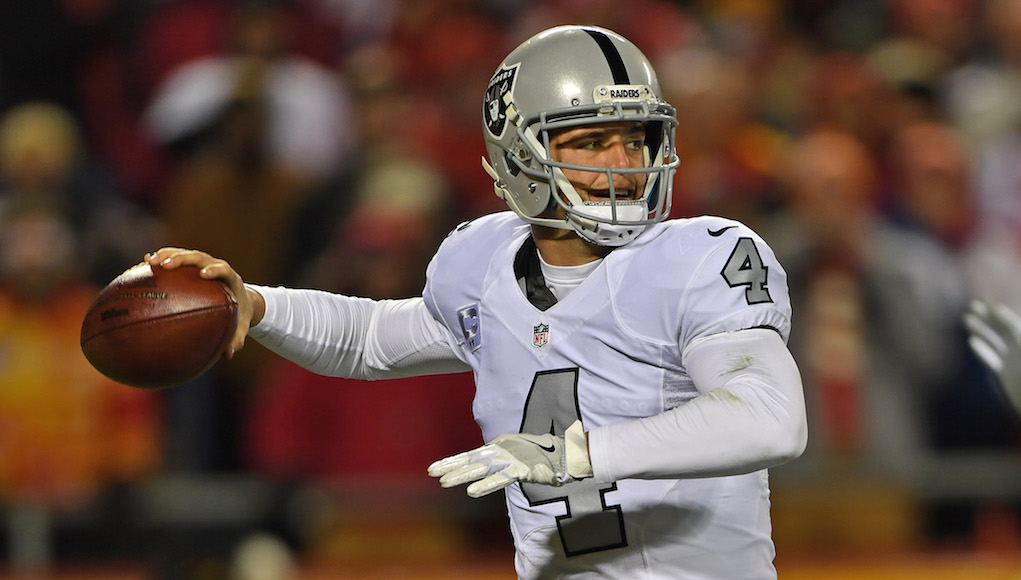
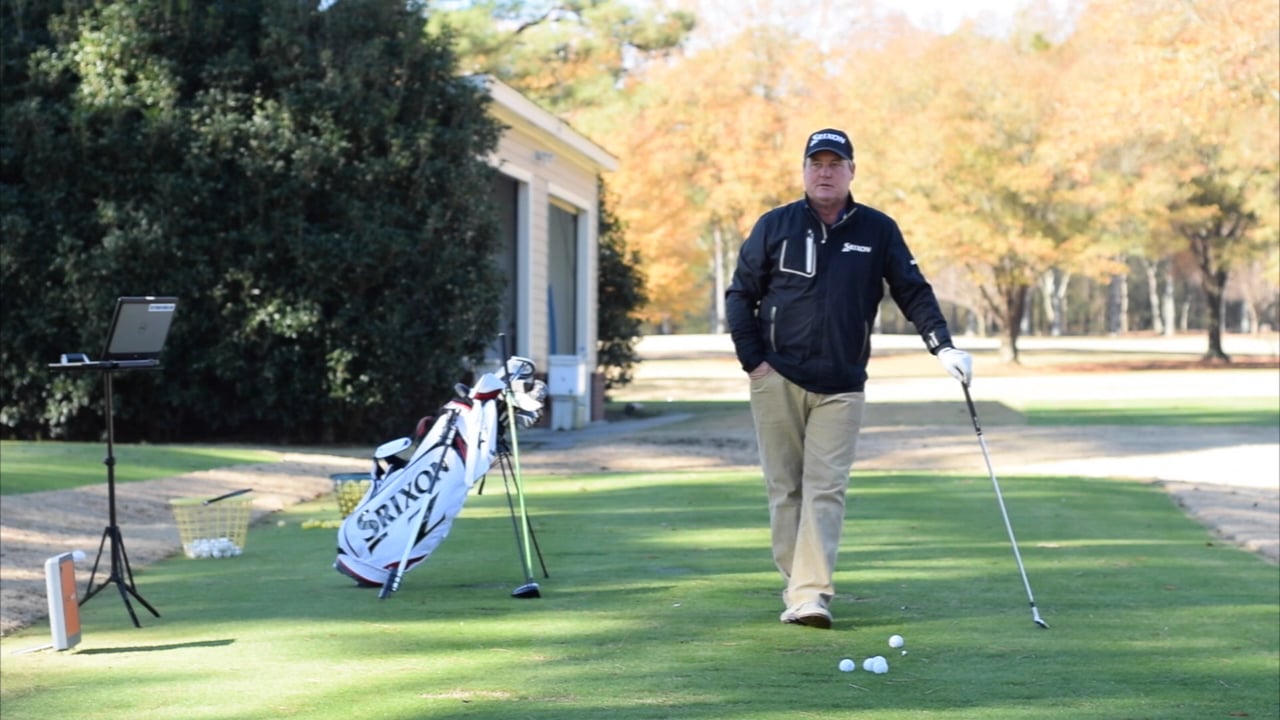
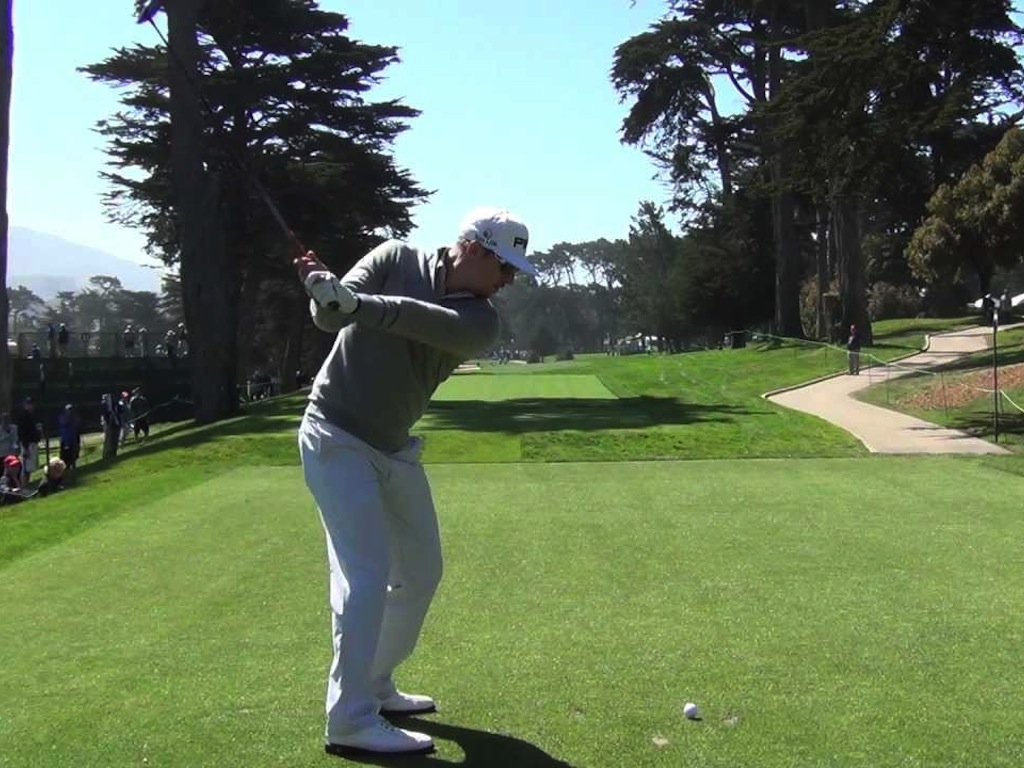
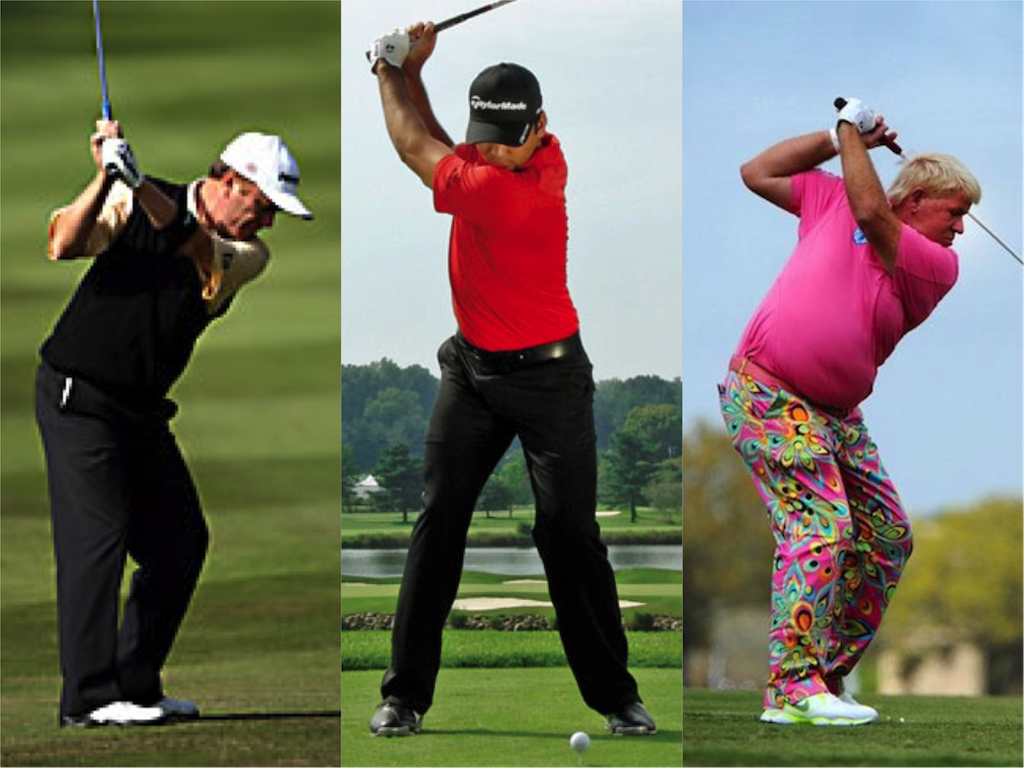











Merkwin
Mar 9, 2015 at 1:06 pm
Chamblee and Miller are two VERY different animals, with two very different resumés
Al
Mar 1, 2015 at 9:52 am
Yes and no, identically to all other golf instruction. The only reason to subscribe to a golf magazine for 2 years is to read all that of last year is wrong.
theo
Feb 28, 2015 at 10:59 am
A couple points I have issue with in the article (not trying to argue – just my take. Sad we have to make that disclaimer on WRX since it’s such a argumentative place).
Sergio doesn’t have a pause. YET his PROBLEM when the pressure on is inevitably that he doesn’t finish his turn. Such as last week at Riviera when he started spraying his driver while out of sequence. So a pause would be of value to him thereby giving him a completed backswing. If he paused from the top on 17 and 18 he likely would have been playing from the fairway.
Additionally, pausing at the top TYPICALLY causes the golfer to initiate the downswing from the bottom up. The reason is that from a stalled (paused) position, downswing transitional energy must be generated off of a resistant surface such as the feet on the stable ground. In my experience it’s the players who pause that are best with their ground up downswing. They typically have a Hideki move unless we are talking about a raw beginner.
Dennis Clark
Feb 28, 2015 at 2:07 pm
You’re right Theo; it is sad you have to make that disclaimer but point well taken…As to the suggestions… Sergio’s snap hooks were the result of quitting with his pelvic rotation THROUGH THE BALL, not away. If he had gone back further (“finished his turn”) he would have come even more from the inside and hit even more of a hook. Her comes in to the golf ball on a lower plane than most anyone out there, and with a flatter shaft requiring a concerted effort to rotate HARD through the ball to slow his club down from closing. If I saw some huge high slices Id be inclined to suggest going further back. Under the gun, an aggressive turn through is always a better bet than a longer backswing simply because it misses right if anything. Thx for your comment
Tanner
Feb 28, 2015 at 7:53 am
Dennis,
Good article, besides the pause, my takeaway is the ground up sequence, why is this so difficult? I will try the shorter swings and push off with the right foot. Not sure why my bad swing is better for now. But, in the long haul, it is not. Does it take a year to commit to this transition? Tanner
Dennis Clark
Feb 27, 2015 at 8:11 am
sure did…had a chance to play with Murph one time, he could golf his ball…
Teedogg
Feb 26, 2015 at 11:03 pm
Murphy never tried to pause it at the top according to him he was trying to feel a full turn and a good left arm extension at the top. He did beat Jack and Arnie 40 years ago this week at the Honda (Gleason) so it worked for him.
Joe Duffer
Feb 26, 2015 at 3:47 pm
Years ago, Charles Barkley was told that a “Pause” at the top would be a good thing to incorporate into his THEN pretty good game (6 cap). It didn’t work well at all…
Dennis Clark
Feb 26, 2015 at 5:46 pm
That’s a whole other story????. I gave him a lesson maybe 20 years ago and that hitch/yip was not there then. But he wasn’t a 6…
dapadre
Feb 26, 2015 at 10:36 am
I think its all about PACE/TEMPO. I read somewhere that a analysis was carried out to see what all good ball strikers had in common, what they found out the 3-1 Tempo. Those that had a quick tempo ( no pause) or those that had a slower tempo, they all had 3-1 (3 counts up, 1 down). Maybe this could be the clue to whether you need a pause or not.
tlmck
Feb 26, 2015 at 2:49 am
I have been pausing for 34 years now and always will.
Regis
Feb 26, 2015 at 8:40 pm
I think you can now start the downswing. You’ve paused long enough. Just kidding.
Matt
Feb 27, 2015 at 3:20 pm
HA, that was great!
A
Feb 25, 2015 at 8:17 pm
This is also Tiger’s problem. His teenage swing was so great because his focus was on the target, and getting the ball to bend and move exactly how he wanted it to. His current state is focused on positions and hitting the ball (recent interview). It’s why his game has fallen apart.
.
The reason he used to hit so many incredible shots out of crazy lies and situations, is because that was when he would hyper-focus on exactly what he wanted the ball to do, and just execute his creativity. Now he’s missing greens from 100 yards in the fairway and skulling wedges because he is committing this exact “death move” – focusing his mind on the ball.
Brian
Feb 26, 2015 at 7:15 am
why isn’t tiger reading this comment section? He would be back by now. 😉
A
Feb 25, 2015 at 8:06 pm
“Pausing” doesn’t have to mean a full stop, freeze. What appears as a pause should actually be a check of being in the most balanced and powerful position to swing through to the target! The backswing achieves nothing but getting you into a position from which you create a powerful through swing.
.
As you said, good players have good sequencing. And if they sequence the same all the time, they will excel. Where as for a player that has inconsistent sequencing, when his swing is anything less than full power it falls apart. On partial swings, how do you sequence your through-swing if you are used to a rushed and jerky transition with strain in your full swing?
.
A “pause” is indicative of a player that has and regularly finds a balanced and powerful position at the top of the swing, and can find that position on 100%, 90%, 80%, … swings, and still complete the same sequenced swing to the finish. A “no-pause” player is not necessarily in a balanced and powerful position at the top of the swing (ie non-pros), and if that is true it can result in a lot of inconsistency in the through swing at different levels of effort. A lack of balance at the top of the swing is typical of an “aggressive transition” amateur, and eliminating that inconsistency by “pausing” (read: finding a balanced and powerful position from which to start the through swing to the target every time) can be helpful.
simeon
Feb 25, 2015 at 7:02 pm
If I don’t pause I tend to take my backswing too far, lift my torso up and cup my lift wrist. Pausing for me is more like a deliberate end point for my backswing. I don’t know though.
jerry
Feb 25, 2015 at 6:52 pm
I don’t know if i have a pause, but when i reach the top of my backswing, there is a feeling of no resistance on the club until after my weight begins to transfer and hips begin turn, which is then followed by the sequence of my downswing. if i don’t have this feeling, which i can only describe as almost no resistance at top of backswing (*if i think, and try to pause it just throws everything off), i feel like and have seen videos of myself and it does not allow me to drop club into proper “slot” as i guess it would be described, and then just feels abnormal. I don’t see a literal “pause” at top of my back swing, the best way to describe the feeling i get, and this may be a “pause” of sort, kind of a really really slow transition where i can let the club fall into place while my lower half is already beginning turn, and then continue with downswing. Maybe I’m slightly in between, i am not a teacher…just found this article interesting and maybe get a response on something to tinker with.
Dennis Clark
Feb 26, 2015 at 6:52 pm
Jerry. I know exactly what you mean. It’s a feeling. I doubt that anything actually stops but the first motion down is a slight push off the rear foot allowing the arms to drop onto the “reentry” plane. Feeling it start a little before the completion of the backswing takes a little getting used to but can create a great sequence particularly if you tend to be an early releaser. Try it you’ll like it
Dennis clark
Feb 25, 2015 at 6:29 pm
I get a lot of my very early releases and casters to try and start down a little earlier. Pausing is the death move for them
A
Feb 25, 2015 at 8:10 pm
It’s a death move only because their focus is on the ball, and not the target. If they pause, their brain has a moment to hesitate, they react and think “oh shoot, I better not miss the ball” and then proceed to try to shove the club at the ball in an effort to not miss it. You’re right, that is a death move!
.
Stop them from trying to hit the ball!! Instead: Swing to the target!!
Dave S
Feb 25, 2015 at 5:20 pm
I think that pausing at the top only really works for flexible golfers. I’m about the least flexible person ever, so trying to emulate pros’ swings is problematic for me. I say the exaggerated pause at the top of Matsuyama’s swing and gave it a try. It didn’t work. My lack of flexibility caused me to have to either un-torque my lower half to allow the club to pause OR start the downswing with my arms instead of the lower body… neither are good.
Dennis Clark
Feb 25, 2015 at 4:06 pm
Also have to consider that the lower body starts laterally for upright swings and more rotary for flatter planes. Neither effects the sequencing however.
Wayne
Feb 25, 2015 at 2:47 pm
Dennis,
For my swing, the pause at the top enables me to fire the hips before starting the downswing. It has really helped me from “coming over the top”. My natural tendency is not to pause but I’ve found that it promotes the sequence that allows me to drop the club in the slot. Pausing at the top has really improved my game.
Cheers.
Scott
Feb 25, 2015 at 12:26 pm
Dennis,
I agree with your analysis on the stop at the top. I have tried this before in a effort to slow my back swing down as well as develop more feel of where the club head was in the swing. It did not work. With your suggestions and observations, I may give this another shot.
Stretch
Feb 25, 2015 at 12:16 pm
A second comment is the way both players drop their heads and create ground force to help launch the ball. Sergio does not extend his lead side as far upwards as Tiger does. Tiger’s shoulder goes above his head through the strike which looks to be why his back and knee are continuing to be an issue.
Stretch
Feb 25, 2015 at 11:54 am
In looking at Sergio’s slo mo swing it is interesting to note that the club head being well inside the hands from down the line facilitates enough downward weight loading that helps the lower body start at the same time as the club drops down into the delivery slot. No pause really helps in windy conditions where a pause and a wind gust can create a clanker of a shot.
K Staff
Feb 25, 2015 at 11:36 am
By definition a change in direction is considered a “pause,” correct? Certain players’ pause is more discernible than others.
I don’t think players should strive to “stop” at the top, but rather not “hit” from the top and allow the lower body initiate the downswing sequence. Does that make sense?
TJ Chester
Feb 25, 2015 at 11:21 am
CJ Bell…. HUH?? Aside from Miller being a bag of Hot Air, Chamblee and Kostis are the most knowledgeable announcers in golf and provide great insight. What makes you think GolfWRX is ‘the Source of Truth’? Have your own Opinion!!!
Person
Feb 25, 2015 at 11:21 am
I pause at the top of my swing just so I can start my hip rotation early and to start my weight transfer from neutral to the ball of my front foot.
Dennis Clark
Feb 25, 2015 at 10:41 am
so true CJ
CJ Bell
Feb 25, 2015 at 9:55 am
How many real golf instructors and reputable websites like GolfWRX do we need to see including “Chamblee” and “problem” in the same article before the Golf Channel starts realizing how much he is hurting the game? If you want to remain misinformed then by all means keep your volume up during a telecast while Chamblee, Kostis, Faldo, Miller, etc. attempt to break down player mishits into something being a “fraction” (-Faldo) off on the 2D bizhub.